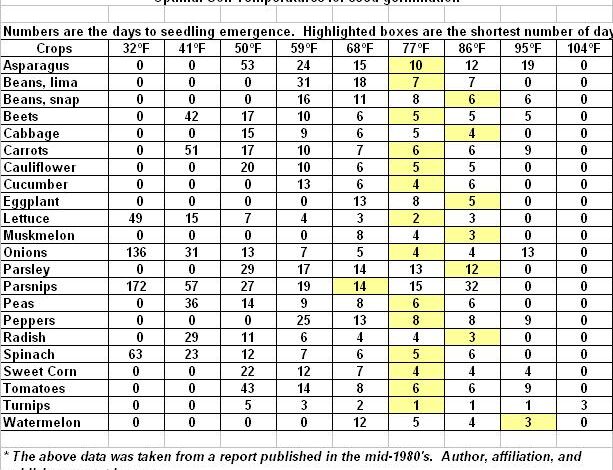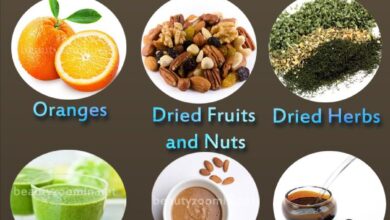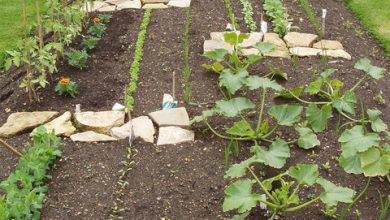Temperatures and times for seed germination

For the seeds to germinate , that is, to give rise to a new plant, we must hydrate them. This is achieved when the soil is sufficiently humid and we maintain a certain degree of constant humidity so that the seed better absorb the humidity in the soil.
The depth must be proportional to the size of the seed, which in turn determines the size of the seedling, that is, its ability to break through the soil particles and reach the surface. It is favorable to immerse the seeds that are thicker in water about twenty-four hours before we sow them, in order to favor that they absorb water and are well hydrated.
Some small seeds (carrot, celery) are covered with a little sand to facilitate germination and not hinder development, the seedling will reach its greatest vigor when coming to light even though the seed has been buried a few millimeters deep.
The duration of the imbibition process and the formation of the seedling is intrinsically marked by genetic factors and conditioned by temperature, but can range from one to twenty days. The farther the temperature is from the most suitable figure for the seed, the longer the process lasts and the more the seedling output is delayed. With temperatures below certain limits, the seeds cannot germinate and create optimal conditions for an attack by parasites that nest in the seedbeds. That is why it is important to know the thermal conditions and the most favorable humidity to sow at the most opportune moment.
The seeds that germinate in a short time, always within the same variety, will give more vigorous plants, more resistant to diseases and ultimately, they will be more productive.
Duration of seed germination
Between 1 and 3 days:
Watercress, radishes and radishes
Between 4 and 6 days :
Chicory, Belgian, kidney bean, pumpkin, onion, dandelion, endive, spinach, pea, broad bean, lettuce, lentil, corn, mustard, turnip, cucumber, leek.
Between 7 and 10 days:
Sorrel, chard, artichoke, alquequenje, aubergine, watercress, borage, thistle, French chives, cabbage, lamb’s lettuce, marjoram, melon, oregano, chervil, pepper, beet, rosemary, salsifi, watermelon, tomato, carrot.
More than 10 days:
Savory, basil, anise, coriander, dill, escorzonera, asparagus, fennel, parsley, sage, tetragon.
Seed sowing depth
Between 5 and 6 cm:
Beans, chickpeas, broad beans.
Between 3 and 4 cm :
Peanut, pumpkin, coriander, asparagus, peas, green beans, lentils, corn, melon, cucumber, watermelon.
Between 1 and 2 cm :
Chard, artichoke, thistle, dandelion, escorzonera, spinach, fennel, hyssop, lemon balm, okra, oregano, beet, rosemary, salsify, tansy, tetragon, thyme.
Between 0.5 and 1 cm:
Sorrel, chicory, savory, alquequenje, anise, aubergine, borage, onion, cabbage, dill, endive, tarragon, turnip flower, lamb’s lettuce, catnip, lettuce, mustard, turnip, chervil, pepper, leek, radish, radish, tomato .
Between 0.1 and 0.3 cm:
Basil, celery, watercress, parsley and carrot.
The sowing time of horticultural plants varies and is conditioned by the climate . While some plants have a high resistance to cold throughout the vegetative cycle, others only need favorable conditions in the first stage of development, or when they have already reached maturity. Other plants tolerate unfavorable thermal conditions by adapting to the cold, but in this case they develop very slowly and only when the climate reaches the ideal conditions do they grow and produce fruit properly. Others adapt only when they have completed the production cycle and are endangered by damage caused by short-term frost or ice.
It is important to know the optimum germination temperature of the seeds , because this will help us to choose the most opportune moment for the start of the crop during the different seasons.
On the other hand, seedlings exposed to low temperatures in their early stages of development do not grow regularly and tend to bloom again, that is, to form the inflorescence as if two years had elapsed in the field. Fennel, endive, lettuce, celery and onion are some clear examples of this phenomenon.
But in addition to the temperature, exposing the seedlings to too much light can be a determining factor in their success.
In short, the seed needs adequate thermal conditions to germinate. If the temperature is less than optimal, the germination time is greatly lengthened and it may not even germinate.
Optimal temperature for seeds to germinate
Low (between 15 and 20 ºC):
Spinach, green peas, parsley
Medium (between 20 and 25 ºC):
Chicory, anise, celery, cardillo, coriander, dandelion, dill, escorzonera, fennel, lettuce, radish, radish, salsify, tetragon, tomato.
High (between 25 and 30 ºC):
Chard, eggplant, pumpkin, onion, cabbage, kohlrabi, parsnip, endive, asparagus, broad bean, lentil, corn, melon, turnip, bell pepper, leek, beet, cabbage, carrot.
Very high (more than 30 ºC):
Artichoke, kidney bean, collard greens, broccoli, thistle, cauliflower, Brussels sprouts, lamb’s lettuce, okra, cucumber, watermelon.
In addition, there are plants that have greater adaptation to one or another climate.
Plants very resistant to cold climates:
Chicory, garlic, thistle, Brussels sprouts, shallot, asparagus, spinach, strawberry, broad bean, turnip, leek, radish, cabbage and rhubarb.
Cold weather resistant plants:
Sorrel, chard, chicory, artichoke, celery, broccoli, onion, coriander, cauliflower, dandelion, endive, lamb’s lettuce, fennel, lettuce, mustard, radishes, beetroot, salsify, tansy, Jerusalem artichoke and carrot.
Ideal plants for temperate climates:
Sweet chicory, savory, basil, artichoke, kidney bean, anise, celeriac, watercress, borage, peanut, zucchini, reed, cabbage, dill, escorzonera, tarragon, chickpea, hyssop, green bean, lentil, marjoram, lemon balm, mint, oregano, potato, parsley, chervil, rosemary, rue, sage, tomato, thyme, purslane.
Ideal plants for hot climates:
Capers, aubergines, sweet potato, pumpkin, melon, okra, cucumber, pepper, watermelon and tetragon.
.

![Photo of Plant Bird’s Nest: [Planting, Care, Irrigation and Substrate]](https://www.complete-gardening.com/wp-content/uploads/2022/08/plant-birds-nest-planting-care-irrigation-and-substrate-390x220.jpg)
![Photo of Sowing Broccoli: [Care, Cultivation, Irrigation, Substrate and Pests]](https://www.complete-gardening.com/wp-content/uploads/2022/08/sowing-broccoli-care-cultivation-irrigation-substrate-and-pests-390x220.jpg)

